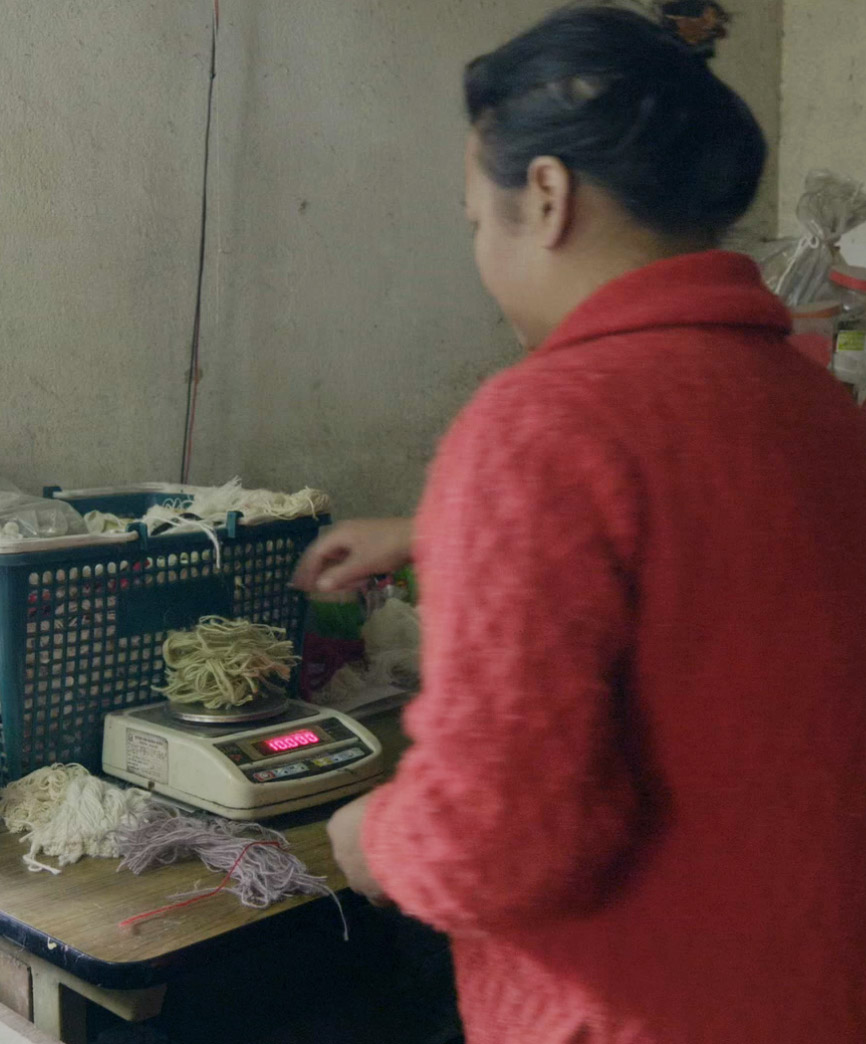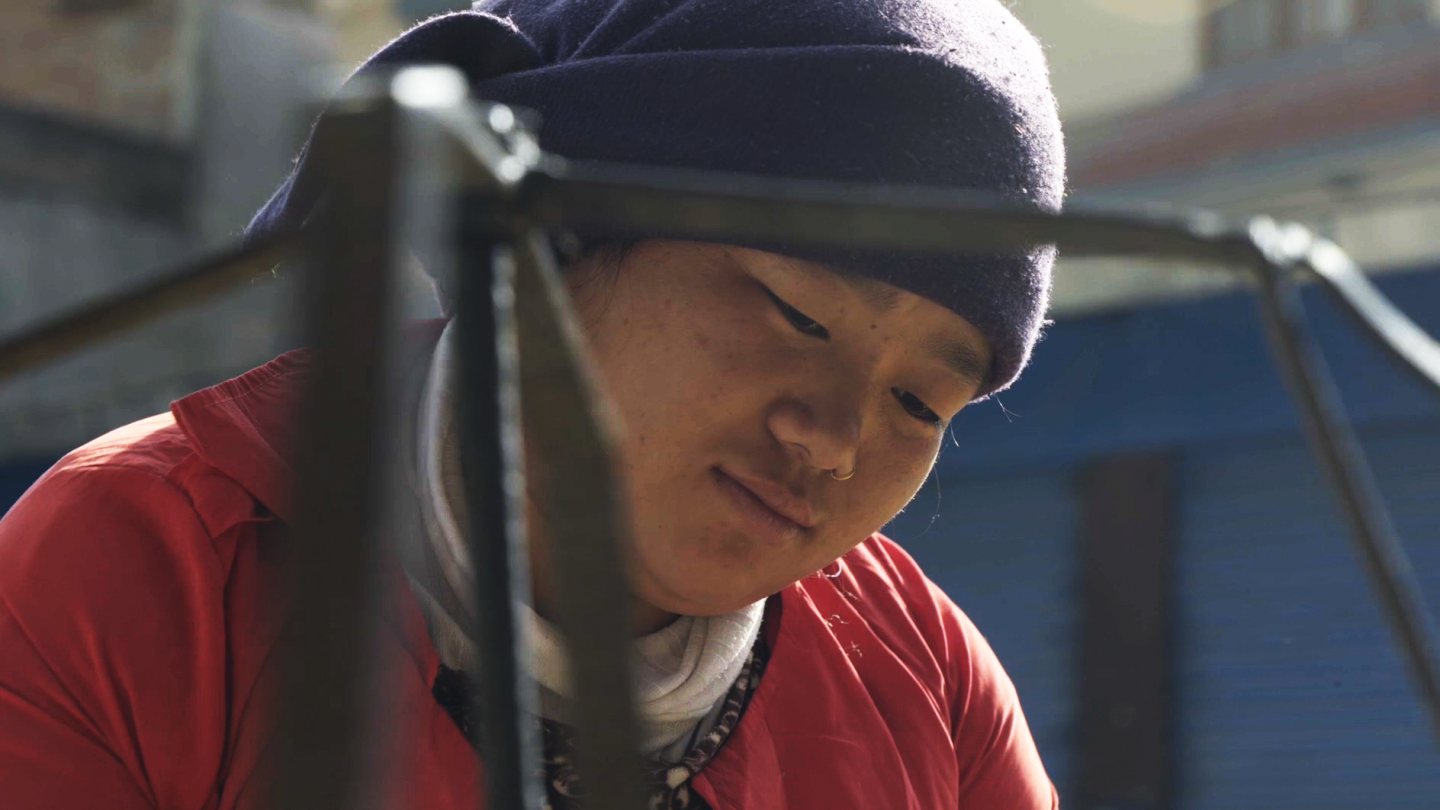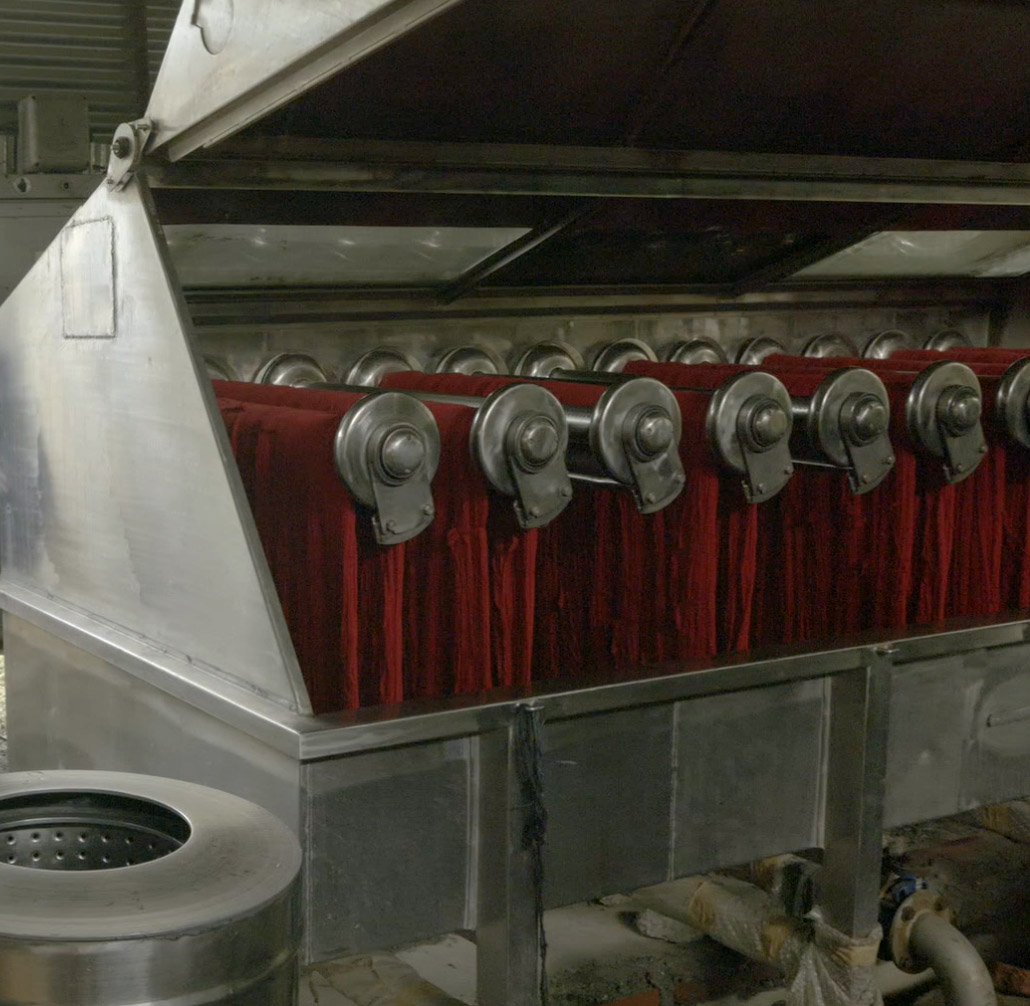ca’lyah
The Tibetan Knot

Each versus tapestry is woven individually by hand from pure Himalayan wool and silk using the Tibetan knot technique.
The wool comes from sheep that roam the high altitude plateau, which due to the climate conditions is characterised by its long fibres and naturally oily texture, giving a visible lustre that increases over time.
The distinctive Tibetan knot method demands finely tuned rhythmic hand and finger movements that loop the yarns under the warp and around a metal gauge rod that helps form the pile height of the tapestry. Each individual tapestry requires a multi-step process that is completed entirely by hand and overseen by a master who performs strict quality controls to ensure the traditional craft is respected. These steps include wool carding, spinning, dyeing and plying the wool, then weaving, washing, stretching and finishing the tapestry.




Passed down from generation to generation, this particular Tibetan weaving tradition was brought over to Nepal during the 1960’s migration wave, but has roots reaching back to 1700 BC on the Tibetan Plateau. Evidence of a similar technique has been found in Coptic Egypt and Central and South Asia dating from the first millennium AD, suggesting that Tibetan traders were active along the Silk Road and other ancient trading routes.

